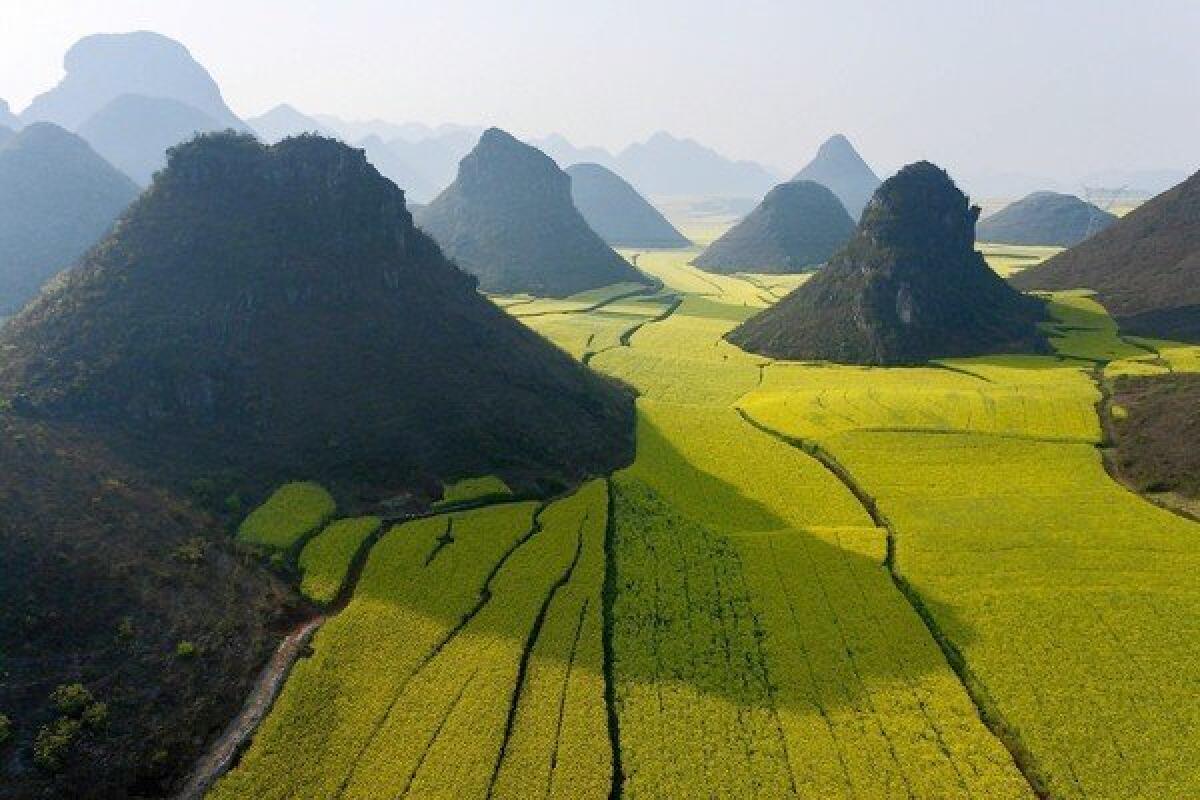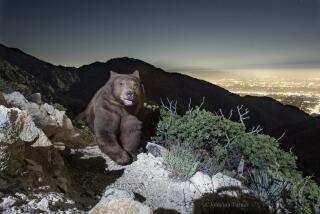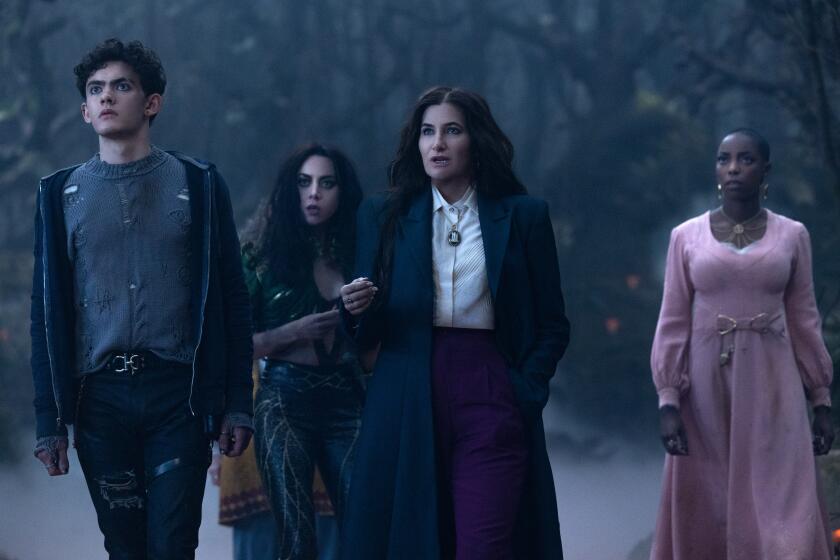A snapshot of history in 500 NatGeo photos

The visual history of the natural and civilized world runs 125 years deep in the archives of National Geographic magazine. It’s a history also of photojournalism, of social documentary and startling wildlife imagery, and is home to a vast ocean of work from some of the most daring and accomplished photographers of the era.
“The Power of Photography: National Geographic 125 Years,” an exhibition now at the Annenberg Space for Photography through April 27, is a 500-picture survey that presents the magazine’s traditional reportage through the cutting-edge technology of large, high-definition displays and accompanying film documentaries.
Among the pictures is a grizzled self-portrait in woolly parka by the explorer Robert E. Peary, who claimed to be the first man to reach the North Pole in 1909. There are pictures of big cats on the move in Africa, of arid desert landscapes and of the blur of humanity rushing past the trains in Randy Olson’s photograph from a Mumbai railway station in 2010. There is a searing, green-eyed gaze from an Afghan girl in Steve McCurry’s 1984 picture from a refugee camp in Pakistan.
PHOTOS: Destinations on National Geographic’s world tour
“What they do best is storytelling,” said Patricia Lanza, the Annenberg’s director of talent and content and a former editor and photographer at the magazine. “It was always about the quality, but the content was really important. The best in the world came to shoot for National Geographic because of the kinds of assignments they gave.”
The free show is the magazine’s first collaboration with the Century City venue since the 2010 single-topic show “Water: Our Thirsty World,” which coincided with a special issue of National Geographic. This time photographic prints are only a small part of the exhibition, with emphasis given to a rotation of pictures flashing on multiple screens focused on several core topics: natural history, culture and geopolitics, science and archaeology and America.
“There’s urgency to the topics. We’re not a travel magazine,” said Sarah Leen, director of photography at the magazine based in Washington, D.C. She co-curated the show with her husband, Bill Marr, the magazine’s creative director. “We see ourselves as a magazine that’s telling you compelling stories in extraordinary ways, using photography as a tool to explore the world and take you on a journey. We’d like to get people to care about the things that we care about — about the planet, about culture, about habitat and animals, the oceans.”
PHOTOS: National Geographic exhibition in Culver City
There are screens dedicated to the work of specific photographers, with portfolios from such influential photojournalists as Eugene Richards and James Nachtwey. And in recent years, the magazine’s visual vocabulary has evolved to include fine artists and portrait photographers, including Martin Schoeller, best known for his ongoing series of extreme close-ups of movie stars. For National Geographic, he took that same approach in a study of the changing demographics in the United States.
“Because it’s a venerable institution, people think they know who you are,” Leen said of the magazine, an arm of the National Geographic Society. “They see the magazine, and think they know what they’re going to get. But if people open the pages, they would be really surprised at the type of stories that we’re doing and the way we’re photographing them — and how much has changed from when they were kids and used to look at the magazine.”
Even at 500 images and a year of research, Leen said, choosing the final pictures for the show was a genuine struggle. “I’m sure I saw only the tip of the iceberg,” she said with a laugh. “All I could think about even after 500-plus images is all that I had to leave out that are so wonderful.”
For more images, go to latimes.com/natgeo.
“The Power of Photography: National Geographic 125 Years” runs through April 27.
More to Read
The biggest entertainment stories
Get our big stories about Hollywood, film, television, music, arts, culture and more right in your inbox as soon as they publish.
You may occasionally receive promotional content from the Los Angeles Times.











